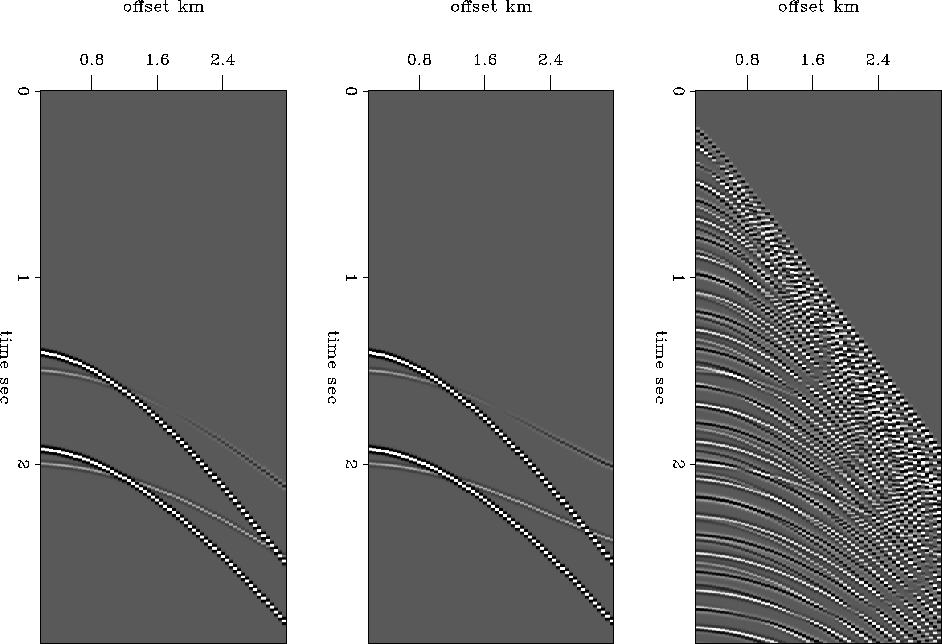 |
Figure 5 Synthetic data. Left: model1, Center: model2, Right: model3
 |
To test the inverse beam stack multiple suppression method I have
prepared three models of synthetic data composed of primaries and multiples.
These models are displayed in figure ![[*]](http://sepwww.stanford.edu/latex2html/cross_ref_motif.gif) .
Each model consists of two primaries, one at 2.0s having constant
amplitude and the other at 1.5s having a polarity reversal. Both primaries
have a zero offset RMS velocity of 2.1km/s. The primaries in model2
have non-hyperbolic moveout which is due to a velocity function that
is proportional to the cube of the offset. The far offset velocity
of the primaries in model2 are 1.15 times higher than the near
offset RMS velocity. The primaries generated in model2
might be expected to occur in the presence of a salt body.
Superimposed on these primaries are multiple events. Two multiple
events are superimposed on the primary events in model1 and model2
and occur at 1.4s and 1.92s. The multiples in model1 and
model2 have RMS velocities of 1.5km/s and have amplitudes that are six
times the zero offset amplitudes of the primary events. The multiples in
model3 are made up of two periodic trains of events, one train with
RMS velocity of 1.5km/s and the other train with RMS velocity of
1.7km/s. The period of the first train is 0.12s while the period
of the second is 0.1s.
.
Each model consists of two primaries, one at 2.0s having constant
amplitude and the other at 1.5s having a polarity reversal. Both primaries
have a zero offset RMS velocity of 2.1km/s. The primaries in model2
have non-hyperbolic moveout which is due to a velocity function that
is proportional to the cube of the offset. The far offset velocity
of the primaries in model2 are 1.15 times higher than the near
offset RMS velocity. The primaries generated in model2
might be expected to occur in the presence of a salt body.
Superimposed on these primaries are multiple events. Two multiple
events are superimposed on the primary events in model1 and model2
and occur at 1.4s and 1.92s. The multiples in model1 and
model2 have RMS velocities of 1.5km/s and have amplitudes that are six
times the zero offset amplitudes of the primary events. The multiples in
model3 are made up of two periodic trains of events, one train with
RMS velocity of 1.5km/s and the other train with RMS velocity of
1.7km/s. The period of the first train is 0.12s while the period
of the second is 0.1s.